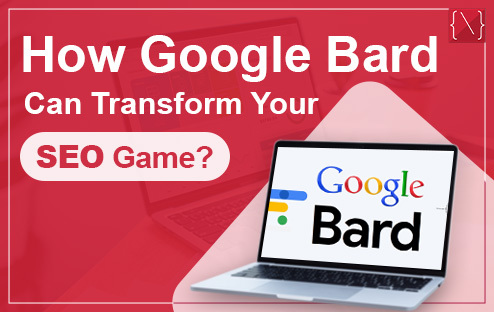
The world of SEO is constantly evolving, and with the introduction of Google Bard, a new wave of possibilities is emerging. This innovative AI tool, built on Google’s LaMDA language model, promises to be a game-changer for businesses looking to optimize their online presence and climb the search engine rankings. But how exactly can Bard transform your SEO strategy? Let’s explore some the exciting ways this AI assistant can empower your content creation, website optimization, and overall SEO approach.
- Semantic Understanding: Traditional SEO strategies often revolved around keyword optimization, with a focus on stuffing content with targeted keywords. However, Google Bard emphasizes semantic understanding, meaning it can discern the underlying meaning of words and phrases within the context of a sentence or paragraph. This allows for more natural and engaging content creation, rather than forced keyword insertion.
- Intent-Based Search Results: With Google Bard, search results are not just based on exact keyword matches but also on the intent behind the search query. By analyzing the context of the query, including the user’s search history, location, and other relevant factors, Google Bard delivers more personalized and relevant search results. As a result, businesses can tailor their SEO strategies to better align with user intent, leading to higher conversion rates and improved user satisfaction.
- Natural Language Queries: The rise of voice search and conversational interfaces has transformed the way people interact with search engines. Google Bard is adept at understanding natural language queries, including long-tail keywords and conversational phrases. This means that businesses can optimize their content for a wider range of search queries, capturing more organic traffic and catering to the growing number of voice search users.
- Content Quality and Relevance: In the era of Google Bard, quality reigns supreme. Search engines prioritize content that is not only relevant to the user’s query but also authoritative, comprehensive, and well-written. By focusing on creating high-quality content that provides value to your target audience, you can improve your chances of ranking highly in search results and establishing your brand as a trusted source of information.
- User Experience Optimization: Beyond content relevance, Google Bard also takes into account factors related to user experience, such as page load speed, mobile-friendliness, and overall website usability. By optimizing your website for these factors, you can enhance the user experience and increase the likelihood of retaining visitors and encouraging repeat visits.
- Structured Data and Schema Markup: Leveraging structured data and schema markup can provide search engines with additional context about your content, helping them understand its relevance and significance. Google Bard is adept at interpreting structured data, allowing businesses to enhance their search listings with rich snippets, knowledge graphs, and other interactive elements that can attract more clicks and improve visibility in search results.
- Adaptability and Evolution: As with any technology driven by machine learning, Google Bard is constantly evolving and improving over time. This means that SEO strategies must also adapt and evolve to keep pace with the latest developments. By staying informed about updates and best practices related to Google Bard, businesses can maintain their competitive edge and continue to reap the benefits of effective SEO.
In conclusion, Google Bard has the potential to transform the way businesses approach SEO. By using its AI capabilities, businesses can enhance their content creation process, improve keyword research, optimize meta tags and descriptions, enhance user experience, and stay up to date with algorithm updates. Embracing this revolutionary tool can give businesses a competitive advantage in the ever-evolving world of SEO, leading to improved rankings, increased organic traffic, and ultimately, better business outcomes.
ALSO READ: How Are The Keywords Determined For SEO Needs?
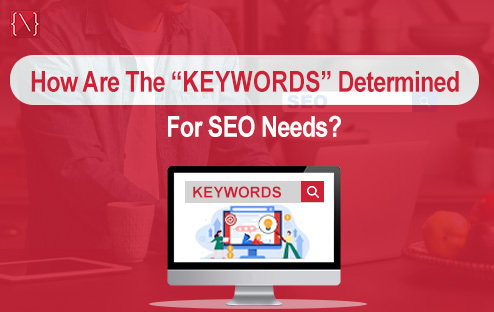
SEO or search engine optimization is a critical part of digital marketing. The process of optimizing your website to rank higher on search engine result pages (SERPs) is what SEO is all about. One of the most important aspects of SEO is determining the right keywords for your website.
Keywords are the words or phrases that people use to search for a particular service or product on search engines. Keywords play an essential role in SEO because they help search engines to understand the context and theme of your website. Using the right keywords can help improve your website’s visibility, drive traffic, and ultimately increase conversions.
So, how are the keywords determined for SEO needs? Here are some of the ways you can determine the right keywords for your website:
- Relevance: The chosen keywords must be highly relevant to your business, website content, and target audience. Targeting irrelevant keywords might attract traffic, but it won’t convert if it doesn’t match your offerings.
- Search Volume: This refers to the average number of times a particular keyword is searched for in a given period. Ideally, you want keywords with a decent search volume to attract a sizable audience. However, it’s not always about chasing the highest numbers.
- Competition: Some high-volume keywords might be extremely competitive, making it difficult for new websites to rank well. Consider the level of competition you’re facing when choosing keywords.
- Search Intent: Understanding the searcher’s intent behind a keyword is crucial. Are they looking for information, trying to compare products, or ready to make a purchase? Optimizing your content for the searcher’s intent will improve its effectiveness.
The Steps to Successful Keyword Research
Now that we understand the importance of choosing the right keywords, let’s explore the steps involved in conducting successful keyword research:
- Brainstorming Relevant Topics: Start by brainstorming a list of topics highly relevant to your niche and target audience. Think about the products or services you offer, the problems you solve, and the information your ideal customer might be searching for.
- Keyword Exploration Tools: Utilize keyword research tools like Google Keyword Planner, SEMrush, or Ahrefs to discover related keywords and search phrases. These tools provide valuable data on search volume, competition level, and even suggest long-tail keywords (more specific keyword phrases).
- Analyzing Search Results (SERPs): Take some time to analyze the top-ranking pages for your target keywords. This will give you valuable insights into the type of content that is already ranking well. You can then identify opportunities to create even better, more informative, or unique content that stands out from the competition.
- Prioritizing Your Keywords: Once you have a comprehensive list of potential keywords, prioritize them based on the factors mentioned earlier. Consider using a mix of high-volume, medium-volume, and long-tail keywords to create a well-rounded SEO strategy.
Additional SEO Considerations
While keyword research is a fundamental aspect of SEO, it’s not the only factor at play. Here are some additional considerations to keep in mind:
On-Page Optimization: Once you’ve identified your target keywords, integrate them naturally into your website content, page titles, meta descriptions, and header tags.
Content Quality: Creating high-quality, informative, and engaging content that caters to your target audience’s needs is essential. Google prioritizes valuable content that provides a positive user experience.
Backlinks: Earning backlinks (links from other websites to yours) is another crucial SEO factor. Backlinks signal to search engines that your website is trustworthy and relevant.
Conclusion
Effective keyword research is a crucial part of successful SEO strategy. By understanding the factors that influence keyword selection and following the steps outlined above, you can identify the right keywords to target and optimize your website content for better organic search visibility. Remember, SEO is an ongoing process. Regularly revisit your keyword strategy, analyze your website’s performance, and adapt your approach to stay ahead of the curve.
ALSO READ: What is Sitemap & How does It help in SEO?
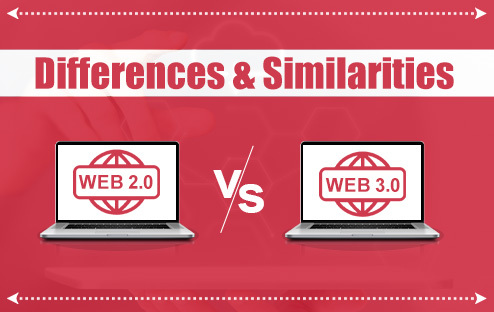
The internet has undeniably revolutionized the way we connect, consume information, and conduct business. Over the past few decades, we’ve witnessed a dramatic shift in how we interact with the web, transitioning from the static, one-way information exchange of Web 1.0 to the dynamic, user-centric environment of Web 2.0. Now, on the horizon, lies Web 3.0, promising a further evolution towards a decentralized, intelligent, and user-empowered web.
Understanding the core differences and similarities between these web iterations is crucial for navigating the ever-changing digital landscape.
Web 2.0: The Era of User Participation
Web 2.0 emerged in the early 2000s, representing a shift from static, one-way communication to dynamic, interactive platforms. At the heart of Web 2.0 were user-generated content, social media, and collaborative tools that empowered individuals to contribute, share, and connect on a global scale. Key features of Web 2.0 included:
Social Networking: Platforms like Facebook, Twitter, and LinkedIn redefined how people interacted online, enabling them to connect with friends, family, and communities in real-time.
User-Generated Content: Websites such as Wikipedia, YouTube, and blogging platforms empowered users to create and share content, democratizing the production and dissemination of information.
Collaborative Tools: Services like Google Docs, Dropbox, and GitHub revolutionized collaboration by allowing multiple users to work on documents, files, and projects simultaneously.
Personalization: Web 2.0 introduced personalized experiences through recommendation algorithms, targeted advertising, and tailored content delivery, enhancing user engagement and satisfaction.
Overall, Web 2.0 fostered a culture of participation, collaboration, and interactivity, laying the foundation for the social web as we know it today.
Web 3.0: The Era of Decentralization and Semantic Web
As we transition into the era of Web 3.0, we witness a paradigm shift driven by decentralization, interoperability, and semantic technologies. Web 3.0 represents a vision of the internet where data, services, and applications are decentralized, enabling greater autonomy, privacy, and security for users. Key characteristics of Web 3.0 include:
Decentralization: Distributed ledger technologies such as blockchain form the backbone of Web 3.0, enabling peer-to-peer transactions, smart contracts, and decentralized applications (DApps) that operate without intermediaries.
Interoperability: Web 3.0 aims to break down silos and create seamless connectivity between different platforms, protocols, and systems, fostering an ecosystem where data and services can freely interact and interoperate.
Semantic Web: Semantic technologies enhance the meaning and context of data on the internet, enabling machines to understand and process information more intelligently. This facilitates advanced search capabilities, personalized recommendations, and context-aware services.
Privacy and Security: Web 3.0 prioritizes user privacy and security through encryption, self-sovereign identity, and decentralized authentication mechanisms, empowering individuals to control their digital identities and data.
Web 3.0 represents a shift towards a more transparent, inclusive, and secure internet, where users have greater control over their online interactions and data.
Differences and Similarities
While Web 2.0 and Web 3.0 represent distinct phases in the evolution of the internet, they also share some commonalities and overlapping themes:
User Empowerment: Both Web 2.0 and Web 3.0 emphasize empowering users to create, share, and interact with content and services online, albeit through different mechanisms.
Technological Innovation: Both phases are characterized by significant technological innovations that reshape how we use and perceive the internet, whether through social media platforms in Web 2.0 or blockchain and decentralized applications in Web 3.0.
Focus on Collaboration: Collaboration remains a central theme in both Web 2.0 and Web 3.0, albeit with different emphases. Web 2.0 focuses on collaborative content creation and sharing, while Web 3.0 emphasizes decentralized collaboration and interoperability.
Impact on Society: Both Web 2.0 and Web 3.0 have profound implications for society, influencing how we communicate, collaborate, conduct business, and navigate the digital world. From social networking to decentralized finance, these paradigms shape our online experiences and interactions.
In conclusion, the transition from Web 2.0 to Web 3.0 represents a significant evolution in the internet’s capabilities, from user-generated content and social networking to decentralization and semantic technologies. While each phase brings its own set of characteristics and implications, they are interconnected in their quest to empower users, foster collaboration, and advance the capabilities of the internet. By understanding the differences and similarities between Web 2.0 and Web 3.0, we can better appreciate the ongoing evolution of the internet and its transformative potential in shaping the future of digital society.
ALSO READ: Digital marketing and Ecommerce- How are they related to each other?
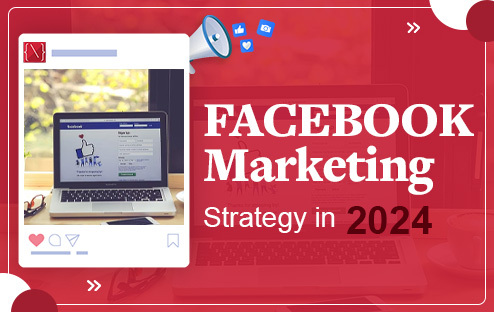
Facebook remains a powerful platform for reaching an engaged audience and driving results for businesses. However, with constant algorithm updates and evolving user behavior, staying ahead of the curve requires a well-defined and adaptable strategy. In 2024, success on Facebook demands a focus on authenticity, community building, and data-driven optimization.
This comprehensive guide will equip you with the knowledge and strategies to implement a thriving Facebook marketing campaign in 2024:
1. Define Your Goals and Target Audience:
- Set SMART goals: Be specific, measurable, achievable, relevant, and time-bound. Do you want to increase brand awareness, drive website traffic, generate leads, or boost sales? Clearly define your objectives to guide your content and targeting strategies.
- Know your audience: Conduct thorough research to understand your ideal customer’s demographics, interests, online behavior, and pain points. This knowledge will inform your content creation, targeting options, and overall communication style.
2. Craft Compelling Content:
- Focus on quality over quantity: Prioritize engaging and informative content that resonates with your audience. Experiment with different formats like images, videos, live streams, stories, and polls to keep your audience interested.
- Embrace authenticity: People connect with genuine brands. Share your brand story, showcase your values, and connect with your audience on a personal level.
- Prioritize visual content: Images and videos grab attention and are more likely to be shared and consumed. Invest in high-quality visuals that complement your messaging.
- Tell stories: Weave narratives into your content to captivate your audience and evoke emotions.
3. Leverage Facebook Groups and Communities:
- Join relevant groups: Engage with existing communities where your target audience gathers. Share valuable insights, participate in discussions, and build relationships with potential customers.
- Create your own group: Foster a dedicated community around your brand. Encourage discussions, offer exclusive content, and provide a platform for customer interaction and feedback.
4. Utilize Paid Advertising (Strategically):
- Boost high-performing organic posts: Amplify your reach and engagement by strategically boosting posts that resonate with your audience.
- Run targeted ad campaigns: Leverage Facebook’s powerful targeting options to reach specific demographics, interests, and behaviors. A/B test different ad formats, copy, and creatives to optimize performance.
- Retarget website visitors: Stay top-of-mind with users who have interacted with your website by showing them relevant ads based on their browsing behavior.
5. Measure and Optimize:
- Track key metrics: Monitor key performance indicators (KPIs) aligned with your goals, such as reach, engagement, website traffic, leads generated, and sales conversions.
- Utilize Facebook Insights: Gain valuable data and insights into your audience demographics, content performance, and ad campaign effectiveness.
- Analyze and adapt: Regularly review your data and make adjustments to your strategy based on what’s working and what’s not. Continuously refine your content, targeting, and ad campaigns for optimal results.
Additional Tips for Facebook Marketing Success in 2024:
- Embrace short-form video content: Capitalize on the popularity of Reels and Stories to capture attention and share engaging snippets.
- Utilize interactive features: Encourage audience participation through polls, quizzes, and Q&A sessions to boost engagement.
- Partner with influencers: Collaborate with relevant influencers in your niche to reach a wider audience and leverage their credibility.
- Prioritize customer service: Respond promptly to comments and messages, address concerns efficiently, and demonstrate a commitment to customer satisfaction.
- Stay informed: Keep up with the latest Facebook algorithm updates, emerging trends, and best practices to adapt your strategy accordingly.
By implementing these strategies and staying adaptable, you can build a thriving Facebook presence in 2024 and achieve your marketing goals. Remember, success on Facebook hinges on creating valuable content, fostering meaningful connections, and making data-driven decisions to continuously optimize your approach.
ALSO READ:- Necessary Points to Remember For Email Marketing – Tips, Tricks & Ideas
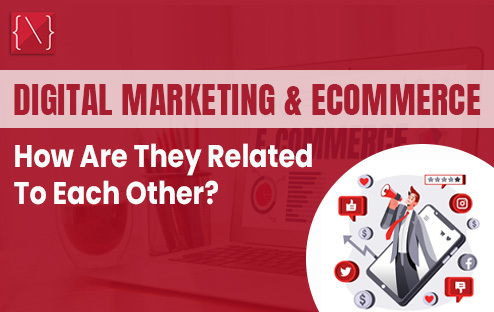
Digital marketing and ecommerce are two buzzwords that have been dominating the business world in recent years. With the rise of technology and internet usage, these two concepts have become crucial for the success of any business, big or small. While some may think that they are separate entities, the truth is that they are deeply interconnected and rely on each other for growth and success.
To understand the relationship between digital marketing and ecommerce, let’s first define both terms. Digital marketing is the use of various digital channels such as social media, search engines, email, and websites to reach and engage with potential customers. On the other hand, ecommerce refers to the buying and selling of goods and services online. It includes everything from online shopping platforms to online banking and other online transactions.
Now, let’s dive deeper into how digital marketing and ecommerce are related to each other.
Increased Reach and Visibility
One of the main goals of digital marketing is to increase a business’s online presence and reach its target audience. With the use of various digital channels, businesses can reach a wider audience than traditional marketing methods. This, in turn, helps to increase brand awareness and visibility. With more people being aware of a brand’s existence, the chances of attracting potential customers and increasing sales also increases.
Ecommerce, on the other hand, provides businesses with a platform to showcase and sell their products or services online. With an ecommerce website, businesses can reach a global audience, expanding their reach and customer base even further. Digital marketing and ecommerce work hand in hand to increase a business’s reach and visibility, making it easier for them to connect with their target audience and potential customers.
Personalization and Targeting
Digital marketing offers businesses the ability to personalize their messages and target specific audiences based on their interests, demographics, and online behavior. This level of personalization helps businesses to create more relevant and tailored marketing campaigns, which, in turn, increases the chances of conversion.
Ecommerce also allows for personalization through features such as product recommendations and personalized offers based on a customer’s purchase history. This enhances the overall shopping experience for customers, making them more likely to return and make repeat purchases. Digital marketing and ecommerce work together to provide a more personalized and targeted approach, making it easier for businesses to attract and retain customers.
Data and Analytics
Digital marketing and ecommerce both rely heavily on data and analytics to measure their success and make informed decisions. With digital marketing, businesses can track and analyze various metrics such as website traffic, social media engagement, email open rates, and more. This data provides valuable insights into customer behavior and preferences, which can be used to optimize marketing strategies and campaigns.
Ecommerce platforms also provide businesses with data on customer behavior, purchase patterns, and more. This data can be used to improve the user experience, optimize product offerings, and make data-driven decisions to increase sales and revenue. The integration of digital marketing and ecommerce allows businesses to gather and analyze data from various sources, providing a more comprehensive understanding of their target audience and market.
Seamless Customer Journey
In today’s digital age, customers expect a seamless shopping experience, whether it’s online or in-store. Digital marketing and ecommerce work hand in hand to provide a smooth customer journey from the initial awareness stage to the final purchase. Digital marketing efforts drive traffic to ecommerce platforms, while ecommerce platforms provide a seamless and convenient buying experience for customers.
Moreover, with the rise of social commerce, where customers can discover and purchase products directly on social media platforms, the line between digital marketing and ecommerce is becoming even more blurred. This integration allows for a more seamless and effortless customer journey, increasing the chances of conversion and customer satisfaction.
In conclusion, digital marketing and ecommerce are two sides of the same coin. They rely on each other to drive business growth and success in today’s digital landscape. As technology continues to evolve, the relationship between these two concepts will only become stronger, making it crucial for businesses to understand and effectively utilize both to stay competitive.
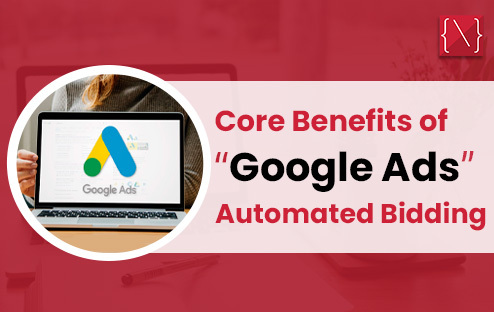
In today’s digital age, advertising is a crucial element of any business’s marketing strategy. With the rise of online platforms and e-commerce, companies are constantly looking for ways to reach their target audience and drive conversions. One effective tool that has gained immense popularity in recent years is Google Ads, formerly known as Google AdWords. With its wide reach and targeting capabilities, Google Ads has become the go-to platform for businesses to advertise their products or services.
However, managing Google Ads campaigns can be a time-consuming and complex process. This is where automated bidding comes into play. With the advancement of technology, Google has introduced automated bidding options to help businesses streamline their advertising efforts. In this blog, we will dive into the core benefits of Google Ads automated bidding and how it can help businesses achieve their advertising goals.
1. Saves Time and Effort
One of the main benefits of using automated bidding on Google Ads is the time and effort it saves. Manually managing bids for each keyword can be a tedious and time-consuming task. With automated bidding, businesses can set their desired bid strategy and let the system do the rest. This allows businesses to focus on other important aspects of their marketing strategy, such as creating compelling ad copies and landing pages.
Moreover, with automated bidding, changes in the market or competitors’ bidding strategies can be quickly adapted to, without the need for constant monitoring and adjustments. This not only saves time but also ensures that businesses are always bidding competitively without missing out on potential conversions.
2. Improved Efficiency and Accuracy
Automated bidding uses machine learning and data analysis to optimize bids based on performance and conversion data. This eliminates any human error that may occur while manually adjusting bids and ensures that bids are accurately placed to achieve the desired results. The system continuously learns and adapts to changes in the market, making it more efficient in optimizing bids for maximum results.
Additionally, automated bidding also allows for more granular bidding adjustments. Businesses can set different bid strategies for different ad groups or even individual keywords, depending on their performance and goals. This level of precision and accuracy in bidding can lead to better results and higher returns on investment (ROI).
3. Better Targeting and Ad Placement
Another core benefit of Google Ads automated bidding is its ability to target and place ads more effectively. With advanced targeting options such as demographics, geography, and interests, businesses can reach their desired audience more efficiently. Automated bidding takes this a step further by analyzing data and targeting the most relevant and valuable audience for each campaign.
Furthermore, automated bidding also optimizes ad placement, ensuring that ads are shown in the most effective positions on Google search results pages and partner websites. This can lead to better visibility, higher click-through rates, and ultimately, more conversions.
4. Cost-Effective Advertising
With manual bidding, businesses often end up overbidding for keywords, resulting in a higher cost per click (CPC). This can quickly deplete their advertising budget, leaving little room for other marketing efforts. Automated bidding, on the other hand, makes real-time adjustments to bids, ensuring that businesses are paying the most competitive price for each click.
Moreover, as the system continuously learns and adapts to market changes, it can optimize bids to achieve the best possible results within the set budget. This can lead to a lower cost per acquisition (CPA) and a more cost-effective advertising strategy.
5. Easy to Use and Accessible
Despite its advanced technology and capabilities, Google Ads automated bidding is relatively easy to use and accessible to businesses of all sizes. With a user-friendly interface and step-by-step guidance, businesses can easily set up and manage their automated bidding strategies. The system also provides detailed performance reports, allowing businesses to track their results and make necessary adjustments.
In addition, Google Ads automated bidding is accessible on multiple devices, making it convenient for businesses to monitor and manage their campaigns on the go.
In conclusion, Google Ads automated bidding offers a range of benefits that can significantly improve a business’s advertising efforts. From saving time and effort to better targeting and cost-effective advertising, automated bidding is a valuable tool for any business looking to achieve success on Google Ads. So, if you are not already using automated bidding, it’s time to give it a try and see the positive impact it can have on your advertising efforts.
ALSO READ:- The Role of CRM in Digital Marketing
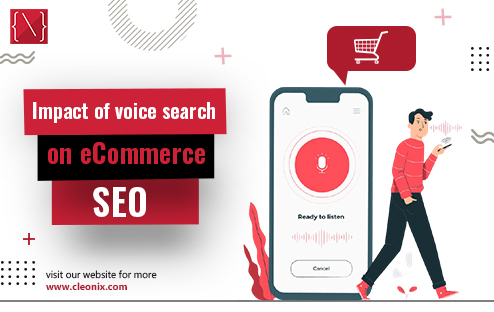
In the ever-evolving landscape of digital marketing, staying ahead of the curve is essential for businesses looking to maintain and enhance their online presence. One of the latest trends reshaping the way consumers interact with the internet is the rise of voice search. As voice-enabled devices like smart speakers and virtual assistants become increasingly popular, their impact on various aspects of online business, particularly eCommerce SEO, cannot be ignored.
The Evolution of Search
Traditional methods of searching, such as typing queries into a search engine, are being complemented and, in some cases, replaced by voice search. The convenience and efficiency of asking a question aloud instead of typing have led to a surge in the adoption of voice-activated devices. Virtual assistants like Amazon’s Alexa, Apple’s Siri, Google Assistant, and Microsoft’s Cortana have become integral parts of people’s daily lives, transforming the way they gather information and make purchasing decisions.
Changing Search Queries
Voice searches tend to differ significantly from text-based searches. When typing a query, users often use concise phrases or keywords, while voice searches tend to be more conversational and natural. For instance, someone might type “best smartphones 2023,” but in a voice search, they might ask, “What are the top-rated smartphones of 2023?” This shift in search behavior has profound implications for eCommerce businesses aiming to optimize their content for search engines.
Long-Tail Keywords Gain Prominence
With the shift towards more conversational queries, the importance of long-tail keywords has increased. These are specific, detailed phrases that users are more likely to use in voice searches. Businesses must adapt their SEO strategies to incorporate these longer, more natural phrases to ensure their products and services are discoverable in voice search results.
Local SEO and Mobile Optimization
Voice searches are often location-specific, with users asking questions like “Where is the nearest electronics store?” This emphasizes the need for robust local SEO strategies for eCommerce businesses. Ensuring that your business’s information is accurate and up-to-date on platforms like Google My Business is crucial for capturing local voice search traffic.
Additionally, mobile optimization plays a significant role, as many voice searches occur on mobile devices. A seamless and mobile-friendly website becomes even more critical to providing a positive user experience and ranking well in voice search results.
The Rise of Featured Snippets
Voice search results are often drawn from featured snippets – concise, information-packed answers that appear at the top of search engine results. Structuring content to provide clear, concise answers to common questions related to your products or services increases the likelihood of your content being featured in voice search results, thereby boosting your visibility and credibility.
Conversational Content is Key
To align with the more conversational nature of voice searches, eCommerce websites need to create content that feels natural when spoken aloud. This involves not only integrating long-tail keywords but also adopting a tone that mimics how people ask questions in real-life conversations. User-friendly, conversational content enhances the overall user experience and increases the chances of being favored by voice search algorithms.
Optimizing Product Information for Voice Search
As voice searches become more prevalent in eCommerce, it’s crucial to optimize product information for this shift in user behavior. This includes creating detailed product descriptions using natural language, incorporating relevant long-tail keywords, and ensuring that your product information is easily digestible for voice-activated devices.
The Future of eCommerce SEO
The impact of voice search on eCommerce SEO is undeniable, and businesses that embrace and adapt to this change will undoubtedly have a competitive advantage. Staying informed about emerging trends, understanding evolving consumer behavior, and continuously optimizing online content for voice search are key strategies for eCommerce success in this dynamic digital landscape.
In conclusion, as voice search continues to reshape the digital landscape, eCommerce businesses must evolve their SEO strategies to remain visible and competitive. By understanding the changing nature of search queries, focusing on local SEO, optimizing for mobile devices, and creating conversational content, businesses can position themselves to thrive in the era of voice-activated search. Embracing these changes today will not only enhance current SEO efforts but also future-proof online businesses in the evolving world of eCommerce.
ALSO READ: Role of UX Design in eCommerce Website Development
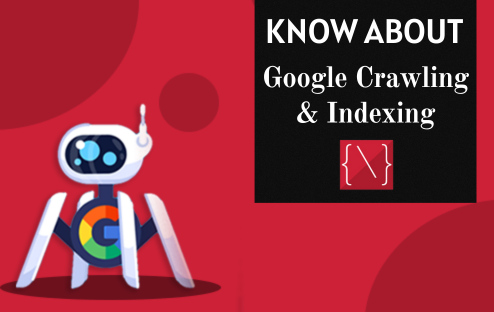
In the vast and ever-expanding world of the internet, search engines serve as our trusty guides, helping us navigate the web’s seemingly endless sea of information. Google, being the most prominent of these digital guides, deploys a complex system to ensure that it efficiently and accurately presents us with the most relevant search results. This system involves two essential processes: crawling and indexing. In this blog, we will delve deep into the world of Google’s crawling and indexing, unveiling the mysteries behind how the search engine makes sense of the internet.
Crawling: The First Step
Crawling is the first step in Google’s process of organizing the web. Imagine the internet as a vast library, and Google’s crawlers as diligent librarians, scouring the shelves for books. In this case, web pages are the books, and crawlers are automated bots or spiders, programmed to methodically traverse the internet.
How Crawling Works
The process begins when Google’s crawlers visit a web page, typically by following links from other pages or through a sitemap submitted by website owners. The bot then downloads the page’s HTML content, analyzes it, and follows any links found within the content. This process continues, forming a vast network of interconnected pages. It’s worth noting that Googlebot doesn’t view websites like humans do; instead, it relies on the HTML source code and text content.
Crawling Frequency
Not all websites are crawled with the same frequency. Google assigns a crawl budget to each site, considering factors such as the site’s importance, update frequency, and server response time. High-quality, frequently updated websites usually get crawled more often, while low-quality or rarely updated sites may be crawled less frequently.
Robots.txt and Meta Robots
Website owners have the ability to control what parts of their site are crawled through a file called ‘robots.txt’ and by using ‘meta robots’ tags in their HTML. These tools allow site owners to exclude specific pages or directories from being crawled by Google.
Indexing: The Second Step
Once a page is crawled and its content is analyzed, Google adds it to its vast database, also known as the index. The index is like a giant catalog of the internet’s content, allowing Google to quickly retrieve and display relevant search results to users.
How Indexing Works
Google’s indexing process involves parsing and storing the information from a web page. This information includes text content, images, videos, and even structured data like schema markup. This stored data is then analyzed and sorted, making it easier to retrieve when a user conducts a search query.
Duplicate Content
One critical aspect of indexing is managing duplicate content. Duplicate content can confuse search engines and negatively impact a site’s search rankings. Google’s indexing system aims to identify and consolidate duplicate pages, ensuring that only one version is stored in the index.
Updating the Index
The index is not static; it’s constantly updated to reflect changes on the web. When Google’s crawlers revisit a page and detect changes, the index is updated accordingly. This process ensures that search results are current and relevant to users.
The Connection between Crawling and Indexing
The relationship between crawling and indexing is intimate. Crawling provides the raw data, and indexing organizes and makes sense of this data. When a user enters a search query, Google’s search algorithms consult the index to provide the most relevant results.
The efficiency and accuracy of this process depend on how well Googlebot crawls and how comprehensively Google’s index reflects the content of the web. For website owners and digital marketers, understanding this relationship is crucial, as it helps optimize a site’s visibility in search results.
Best Practices for Website Owners
Now that we have a better grasp of Google’s crawling and indexing processes, let’s explore some best practices for website owners:
Optimize Crawlability: Ensure that your website is easily crawlable by organizing your site structure, using clear and concise HTML, and creating a sitemap.
Quality Content: Publish high-quality, relevant content that engages users. Google’s algorithms favor fresh, unique, and valuable content.
Mobile-Friendly: With the mobile-first indexing approach, it’s essential to have a mobile-friendly website for a broader reach.
Page Speed: Fast-loading pages are essential for a good user experience and can positively impact your search rankings.
HTTPS: Secure your website with HTTPS, as Google prefers secure sites and ranks them higher.
Structured Data: Implement structured data markup (schema.org) to enhance the visibility of rich snippets in search results.
Regular Updates: Keep your site fresh and updated, as this encourages Google to crawl and index your site more frequently.
Duplicate Content: Avoid duplicate content issues by using canonical tags or redirects to specify the preferred version of a page.
Robot Directives: Use robots.txt and meta robots tags to control which parts of your site are crawled.
Monitor Performance: Regularly check your site’s performance in Google Search Console to identify crawl and indexing issues.
Conclusion
Google’s crawling and indexing processes are the backbone of the search engine’s ability to provide users with relevant and up-to-date information from the vast expanse of the internet. Understanding these processes and implementing best practices can significantly impact a website’s visibility and search rankings.
Website owners and digital marketers should continuously adapt to the evolving landscape of SEO and search engine algorithms, ensuring their sites are not only crawled but also indexed effectively. By doing so, they can harness the immense power of Google to connect with a global audience and provide valuable information to those in search of answers, products, or services.
ALSO READ: How Schema Markup Contributes to Your SEO Ranking?
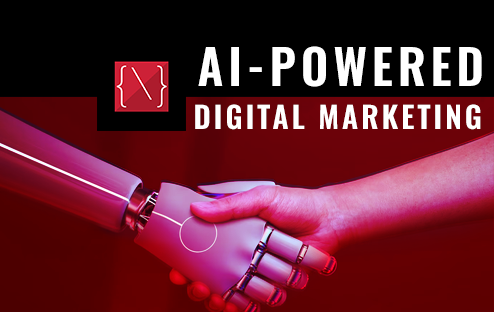
In the ever-evolving landscape of digital marketing, staying ahead of the curve is not just an option; it’s a necessity. As businesses strive to connect with their audiences in a rapidly changing digital world, one technology is emerging as a game-changer: Artificial Intelligence (AI). AI-powered digital marketing is revolutionizing the way businesses reach, engage, and convert customers. In this blog post, we’ll delve deep into the world of AI in digital marketing, exploring its transformative potential, its impact on various aspects of advertising, and why it’s the future of marketing.
The Digital Marketing Landscape
Before we delve into the role of AI, let’s set the stage by understanding the modern digital marketing landscape. In today’s digital age, businesses are vying for consumers’ attention in a crowded online marketplace. Traditional marketing tactics are no longer sufficient to cut through the noise and drive meaningful results. Digital marketing, which encompasses a wide range of online channels such as social media, email, search engines, and websites, has become the go-to strategy for businesses seeking to expand their reach and boost their bottom line.
The Rise of Artificial Intelligence
Enter Artificial Intelligence. AI, the simulation of human intelligence by machines, is fundamentally changing how businesses approach digital marketing. It enables companies to leverage data-driven insights and automation to create more personalized and effective marketing campaigns. AI algorithms analyze massive amounts of data faster and more accurately than any human could, making it an invaluable tool in today’s data-driven marketing landscape.
AI-Powered Personalization
One of the most significant advantages of AI in digital marketing is its ability to deliver personalized content and experiences to users. Traditional marketing campaigns often relied on a one-size-fits-all approach, which, more often than not, led to missed opportunities and wasted resources. AI, on the other hand, enables marketers to tailor their messages, products, and services to the individual preferences and behaviors of each customer.
For instance, AI can analyze a user’s browsing history, purchase history, and interactions with a website to recommend products or content that are highly relevant to them. This level of personalization not only enhances the user experience but also increases the likelihood of conversions and customer loyalty.
ALSO READ: Ultimate Yoast SEO Tutorial: From Beginner to Pro in Just 7 Steps
Enhanced Customer Engagement
Engaging customers in a meaningful way is a core goal of digital marketing, and AI is proving to be a powerful ally in achieving this objective. AI chatbots, for example, are becoming increasingly common on websites and social media platforms. These chatbots can provide instant responses to customer inquiries, offer product recommendations, and even assist with the purchasing process. By offering quick and relevant assistance, AI-powered chatbots enhance customer engagement and satisfaction.
Moreover, AI can analyze user behavior and preferences to determine the best times to send emails, post on social media, or run advertising campaigns. This data-driven approach ensures that marketing efforts are well-timed and have a higher chance of resonating with the target audience.
Predictive Analytics
Predictive analytics is another area where AI shines in digital marketing. By analyzing historical data and identifying patterns, AI can make accurate predictions about future trends, customer behavior, and market shifts. This allows businesses to stay ahead of the competition by making informed decisions and adjusting their marketing strategies accordingly.
For instance, AI can predict which products are likely to be popular in the upcoming holiday season, enabling retailers to stock inventory accordingly and plan targeted marketing campaigns.
Cost Efficiency and ROI
AI-powered digital marketing isn’t just about delivering better results; it’s also about doing so more efficiently. AI can automate repetitive tasks such as data analysis, content curation, and ad optimization. This automation not only saves time but also reduces the risk of human error.
Furthermore, AI algorithms can continuously monitor and adjust advertising campaigns in real-time to maximize return on investment (ROI). If a particular ad isn’t performing well, AI can quickly identify the issue and make necessary adjustments to improve its effectiveness. This level of optimization is nearly impossible to achieve through manual methods alone.
Challenges and Ethical Considerations
While AI offers tremendous benefits to digital marketing, it also presents challenges and ethical considerations. Privacy concerns, data security, and the potential for bias in AI algorithms are all important issues that marketers must navigate responsibly. It’s essential to strike a balance between harnessing the power of AI and respecting user privacy and data protection regulations.
ALSO READ: Necessary Points to Remember For Email Marketing – Tips, Tricks & Ideas
The Future of Advertising
In conclusion, AI-powered digital marketing is reshaping the advertising landscape. Its ability to deliver personalized content, enhance customer engagement, leverage predictive analytics, and optimize campaigns for cost efficiency is propelling businesses toward greater success in the digital age. As AI continues to advance and become more accessible, it will undoubtedly play an even more significant role in the future of advertising.
Businesses that embrace AI in their digital marketing strategies will have a competitive edge, reaching and connecting with their target audience in ways that were previously unimaginable. The future of advertising is here, and it’s AI-powered. Are you ready to harness its transformative potential?
Stay tuned as we explore more AI-driven innovations in the dynamic world of digital marketing, where the only constant is change. The future is now, and it’s powered by Artificial Intelligence.
Remember, the key to success is not just embracing technology but also using it ethically and responsibly to create meaningful and engaging experiences for your customers in the digital realm.

If you’re a WordPress user, you’re probably familiar with the Yoast SEO plugin. It has been a go-to tool for optimizing your website’s search engine visibility for years. However, it’s not the only player in the game. There are several excellent alternatives that can help you handle your WordPress SEO effectively. In this article, we’ll explore some of the best Yoast SEO alternatives that can take your website’s search engine optimization to the next level.
1. Rank Math
Rank Math is a powerful plugin that has gained a lot of popularity in recent years. It offers a user-friendly interface and a wide range of features that make optimizing your content for search engines a breeze. From on-page optimization to schema markup, Rank Math covers all the essential aspects of SEO. It also provides detailed suggestions for improving your content and helps you monitor your website’s performance over time.
2. All in One SEO Pack
As the name suggests, the All in One SEO Pack aims to provide a comprehensive solution for your WordPress SEO needs. It’s one of the oldest SEO plugins for WordPress and has a proven track record. With features like XML sitemaps, social media integration, and performance optimization, this plugin offers a well-rounded approach to improving your website’s visibility.
3. SEOPress
SEOPress is another robust alternative to Yoast SEO that has been gaining traction. It offers both a free and a pro version, making it suitable for both beginners and advanced users. SEOPress provides features like content analysis, XML and HTML sitemaps, breadcrumbs, and even integrates with Google Analytics. Its focus on performance optimization can also help boost your website’s loading speed, which is a crucial factor for SEO.
4. Squirrly SEO
Squirrly SEO is a unique plugin that is designed with content creators in mind. It offers real-time guidance while you’re writing your content, ensuring that your articles are not only search engine friendly but also engaging for your audience. Squirrly provides a comprehensive SEO audit, keyword research tools, and even helps you monitor your competitors. It’s a great choice if you’re looking for a plugin that seamlessly blends SEO with content creation.
ALSO READ: AdSense Alternatives Top 8 Best Ad Networks for 2023
5. SEO Framework
If you prefer a lightweight SEO plugin that doesn’t overwhelm you with options, the SEO Framework might be the right choice. It focuses on automating many technical aspects of SEO, such as generating meta tags and optimizing images. The plugin follows Google’s best practices, and its simplicity makes it a great alternative for those who want a hands-off approach to SEO.
6. Slim SEO
As the name suggests, Slim SEO is a lightweight and fast alternative to Yoast SEO. It doesn’t have an overwhelming number of features, but it covers all the essentials. From XML sitemaps to meta tag optimization, Slim SEO ensures that your website is well-prepared for search engines without bogging down your site with unnecessary bloat.
7. Broken Link Checker
While not a full-fledged SEO plugin, Broken Link Checker is a handy tool to have in your arsenal. Broken links can harm your website’s SEO by creating a poor user experience and negatively affecting your search engine rankings. This plugin scans your website for broken links and missing images, allowing you to fix them promptly and maintain a healthy website.
Conclusion
While Yoast SEO has been a staple in the WordPress ecosystem, it’s essential to explore alternatives that may better suit your needs and preferences. Whether you’re looking for a feature-rich SEO suite, a content-focused approach, or a lightweight solution, there are plenty of options available. Each of the mentioned alternatives comes with its unique set of features, so take the time to assess which one aligns best with your website’s goals and your level of expertise. Ultimately, the right SEO plugin can significantly impact your website’s visibility and success in the digital landscape.
About the author
Cleonix Technologies
A professional Web Development Company is highly focused on providing world class and best in the industry standard services in every domain that we work upon.

 AJ 14, Salt Lake, Sector 2, Kolkata - 700091 |
AJ 14, Salt Lake, Sector 2, Kolkata - 700091 |  743 Virginia Ave NE Atlanta, GA 30306
743 Virginia Ave NE Atlanta, GA 30306










